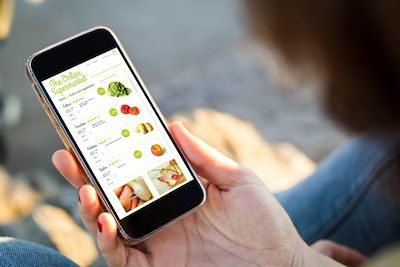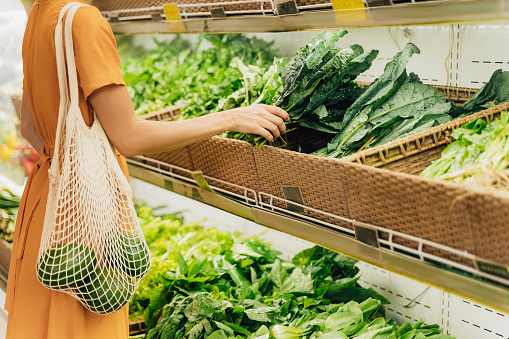Changing consumer lifestyles and shopping behaviors
Editor’s note: Jola Burnett is the vice president, client development, in the U.S. for Behaviorally (Formerly PRS). Burnett is based in New York.
As COVID-related restrictions ease, we are all cautiously hopeful for some return to a post-pandemic equilibrium. Strategists in board rooms around the world, hungry for some degree of reliable predictability, are now pondering a new normal asking, “Now what?”
 While watershed moments like the COVID-19 pandemic are unpredictable, the pandemic has accelerated trends and consumer behaviors that were already building up. Younger generations were the ones engaging in click-and-collect and digital experiences, but a time of crisis (aka the pandemic) has pushed societies to alter their behavior forever. There is an abundance of data – both anecdotal and quantified by surveys and research across the industry – that definitively report on what most of us already knew had been trending before COVID: Fueled mostly by “there was no other choice,” consumers at least experimented with online shopping, particularly in grocery, and many claim that they are not going back.
While watershed moments like the COVID-19 pandemic are unpredictable, the pandemic has accelerated trends and consumer behaviors that were already building up. Younger generations were the ones engaging in click-and-collect and digital experiences, but a time of crisis (aka the pandemic) has pushed societies to alter their behavior forever. There is an abundance of data – both anecdotal and quantified by surveys and research across the industry – that definitively report on what most of us already knew had been trending before COVID: Fueled mostly by “there was no other choice,” consumers at least experimented with online shopping, particularly in grocery, and many claim that they are not going back.
As a result of the changing consumer lifestyles and shopping behaviors, we are looking at a whole new world of changing consumer needs. The future of shopping is hybrid. There is an expectation for more experiential shopping beyond a quick transaction. One caveat to keep in mind is the product category, as it can have an impact on customer involvement. With that said, the pandemic has set new bars for achieving loyalty and ways for brands to drive shopper growth.
Shopper behavior: Place, time, category shifts and shopping as entertainment
Consumers are slowly returning to their workplaces – though many will do so on a hybrid basis. This has an impact on where people shop, when they shop and what they shop for. Many have shifted away from coffee shops to gourmet brews at home. Consumers are also slowly returning to stores, but we will need to watch this closely because the enticing factors are sometimes beyond a brand’s control.
There are certain products (like toilet paper) consumers would rather have delivered. But many crave social interaction and experiences outside their homes. Thus, there is an opportunity for retailers to bring shopping experiences to a whole new level. It will be critical to understand behavioral influencers in the shopper journey and pinpoint the elements needed to entice consumers to return to the physical store. But how will retailers juggle courting repeat business through their digital retail presence and e-commerce channels as they drive consumers back to the brick-and-mortar aisles? Where retailers have investments in physical as well as online environments, success will come from the realization that brand loyalty to the retailer is now an exercise in seizing omnichannel customer satisfaction.

Shifts will break down along some very different lines compared with pre-COVID behavior. Where shopping is a chore, AI-commerce or AI powered commerce/automation and convenience can drive the consumer path-to-purchase online permanently, especially where replenishment and ease of pick-up or delivery tops a trip to the store.
Online retail and further adoption of e-commerce will also facilitate comparison shopping as consumers look for bargains and savings, often at the expense of loyalty to a “brand used most often.”
Retailers that eliminate friction and barriers to the shopping experience across all touchpoints will reap the omnichannel benefits. This is especially true for consumers who continue to realize positive tradeoffs to dividing their purchases among specialty retailers – like pet food provider Chewy.com – and their weekly shop, which is now often done via Instacart or retailers’ proprietary apps for click-and-collect. Impulse purchases are more likely to occur when shoppers are back in the physical aisles.
Convenience might become an even bigger shift driver. Consumers will ask themselves: Am I shopping on my way home from work? Not if my work from home commute patterns are further disrupted by a hybrid work model. Or can I sneak in my weekly online replenishment order when the kids are in bed, even if the physical store is closed?
Today, consumers want products now. Omnichannel retailers need to continue thinking about delivery on demand. In June 2021, grocery leader Albertsons announced a partnership with DoorDash to deliver purchases within an hour from over 2,000 stores. Ultimate impact? Yet to be seen. But it might be more of a loyalty magnet than an absolute revenue play.
Where shopping shifts online, there are other factors that impact behavior. Reviews, recommendations and even new forms of retail advertising are likely to bring the excitement of gaming to the previously mundane shopping chore. As Behaviorally reported earlier this year, mobile, livestream and social commerce in Asia has already turned shopping into entertainment. If we will see grocery majorly impacted by this phenomena soon, beauty and fashion are well on their way, even in the West, to seeing these effects. Livestreaming and social commerce builds a community, which boosts engagement and, in the end, loyalty. It also has become the perfect environment for the new “impulse” shopping behaviors for many.
Loyalty erosion, behavior changes at the digital shelf
The digital shelf continues to be perplexing for many consumers to navigate when thumbnail images must serve as the path-to-purchase beacons for finding the exact SKU to meet their needs. Previously, point-of-sale materials or unique packaging might have facilitated findability in the in-store environment. One of my colleagues accidentally purchased a three-pound tub of macaroni salad on her online grocery app for a BBQ with her boyfriend. She mistook the image on the e-commerce grid for the eight-ounce serving that was more than enough for just two people! More work is needed to avoid this type of shopping mishaps.
It is not surprising that many consumers choosing the e-commerce mode will default to “order again” once the right or “good-enough” choice has been made. This creates a block to new product discovery or alternatives to previous purchases, and further erodes loyalty if a shopper finds their usual choice out of stock.
Much like with the discovery playlist suggested by your Amazon Echo, AI-commerce is an opportunity to help consumers stumble upon new products. This already exists to a degree with “you may also like” recommendations, but a further gamified experience with an element of surprise can boost excitement for new product discovery.
A brand’s learning curve
On the brand side, there is an equally painful and steep learning curve for the shopper marketers and category managers who need to wrestle the data- and image-rich – but unforgiving – constraints of the product detail page on the digital retail platforms. The net effect adds levels of complexity they never had to manage in the physical retail planogram. Multiply this by the number of retail channel outlets representing the trading partners for any given brand and the variables (and pain points) become geometric.
All of this comes at a time when retailers are investing heavily in private label brands, no longer just the low-cost alternative, which retailers can insinuate into the consideration set to their advantage over well-known brands. Will this erode market share of “brands used most often?” Potentially, but if the logarithmic gains of store brands are an indicator, these are seismic shifts that should not be ignored.
For example, grocery giant Kroger has annual sales clocked in at $132 billion, with private label sales exceeded $26.2 billion in sales last year. Simple Truth – one of its cross-category brands – surpassed $3 billion in annual sales alone. What has yet to be proven is the degree to which satisfaction with store brands beyond “good enough” will be a driver of brand loyalty for the retailer themselves.
On the flip side, what about brands going direct to consumer – such as PepsiCo’s snack.com? Impacts of these experiments will likely be less on revenue and more on a brand’s ability to harvest first-party data around consumer insights. It is yet another factor to observe as time passes.
Driving shopper growth
The key elements to driving shopper growth include uncovering factors that will influence shopper choice, at any touchpoint in the now and future omnichannel journey. This means taking an agile approach with a digital mind-set and being willing to embrace a behavioral framework to make sense of evolving shopper insights.
